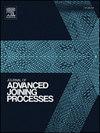Temperature influence on the repair of a hardfacing coating using laser metal deposition and assessment of the repair innocuity
IF 3.8
Q2 MATERIALS SCIENCE, MULTIDISCIPLINARY
引用次数: 0
Abstract
Additive manufacturing (AM) is a proven time- and cost-effective method for repairing parts locally damaged after e.g. repetitive friction wear or corrosion. Repairing a hardfacing coating using AM technologies presents however several simultaneous challenges arising from the complex geometry and a high probability of crack formation due to process-induced stress. We address the repair of a cobalt-based Stellite™ 6 hardfacing coating on an AISI 316L substrate performed using Laser Powder Directed Energy Deposition (LP-DED) and investigate the influence of key process features and parameters. We describe our process which successfully prevents crack formation both during and after the repair, highlighting the design of the preliminary part machining phase, induction heating of an extended part volume during the laser repair phase and the optimal scanning strategy. Local characterization using non-destructive testing, Vickers hardness measurements and microstructural examinations by scanning electron microscopy (SEM) show an excellent metallurgical quality of the repair and its interface with the original part. In addition, we introduce an innovative process qualification test assessing the repair quality and innocuity, which is based on the global response to induced cracks and probes the absence of crack attraction by the repair (ACAR1). Here this ACAR test reveals a slight difference in mechanical behavior between the repair and the original coating which motivates further work to eventually make the repair imperceptible.
温度对激光金属沉积堆焊涂层修复的影响及修复无害性评价
增材制造(AM)是一种经过验证的时间和成本效益的方法,用于修复局部损坏的部件,例如重复摩擦磨损或腐蚀。然而,使用增材制造技术修复堆焊涂层同时也面临着一些挑战,这些挑战来自于复杂的几何形状和由于过程引起的应力而产生裂纹的高概率。我们采用激光粉末定向能沉积(LP-DED)技术修复了AISI 316L基板上的钴基Stellite™6堆焊涂层,并研究了关键工艺特征和参数的影响。我们描述了在修复过程中和修复后成功防止裂纹形成的工艺,重点介绍了初步零件加工阶段的设计,激光修复阶段扩展零件体积的感应加热和最佳扫描策略。采用无损检测、维氏硬度测量和扫描电镜(SEM)进行的局部表征表明,修复件及其与原零件的界面具有良好的冶金质量。此外,我们介绍了一种创新的工艺资格测试,评估修复质量和无公害,该测试基于对诱导裂纹的全局响应,并探测修复过程中没有裂纹吸引(ACAR1)。在这里,ACAR测试揭示了修复和原始涂层之间机械行为的细微差异,这促使进一步的工作,最终使修复变得难以察觉。
本文章由计算机程序翻译,如有差异,请以英文原文为准。
求助全文
约1分钟内获得全文
求助全文

 求助内容:
求助内容: 应助结果提醒方式:
应助结果提醒方式:


